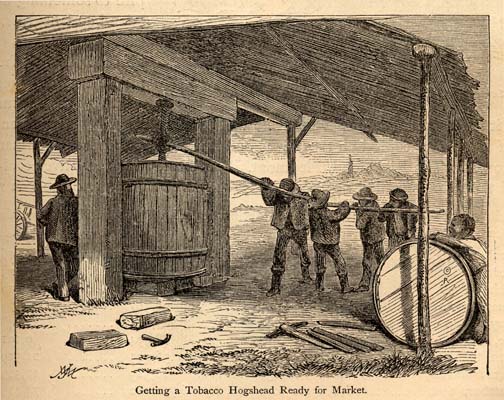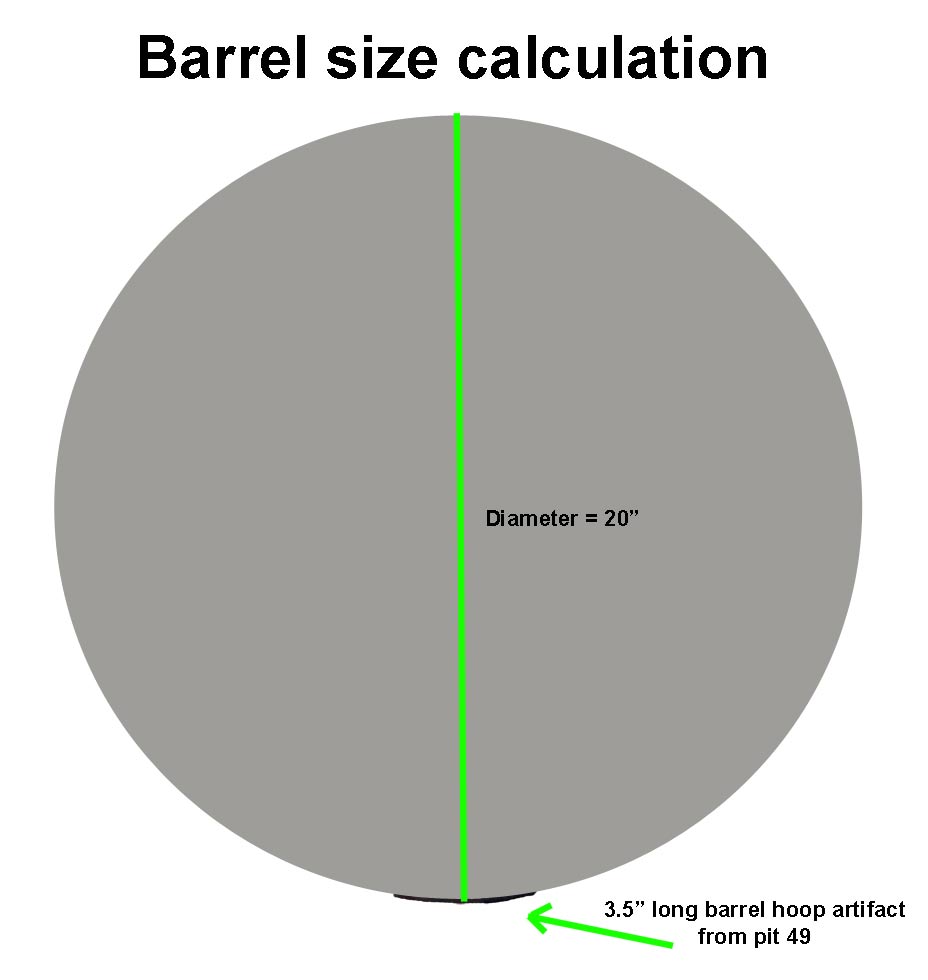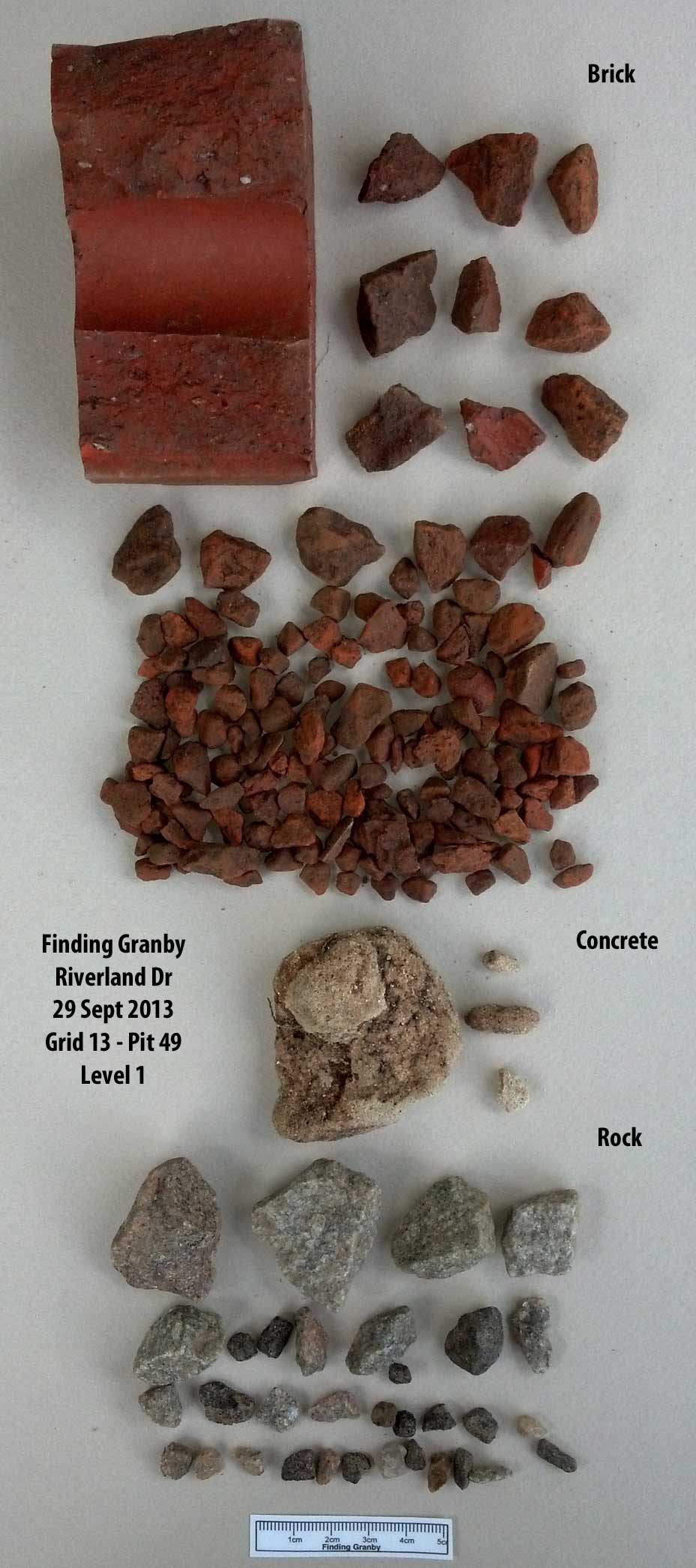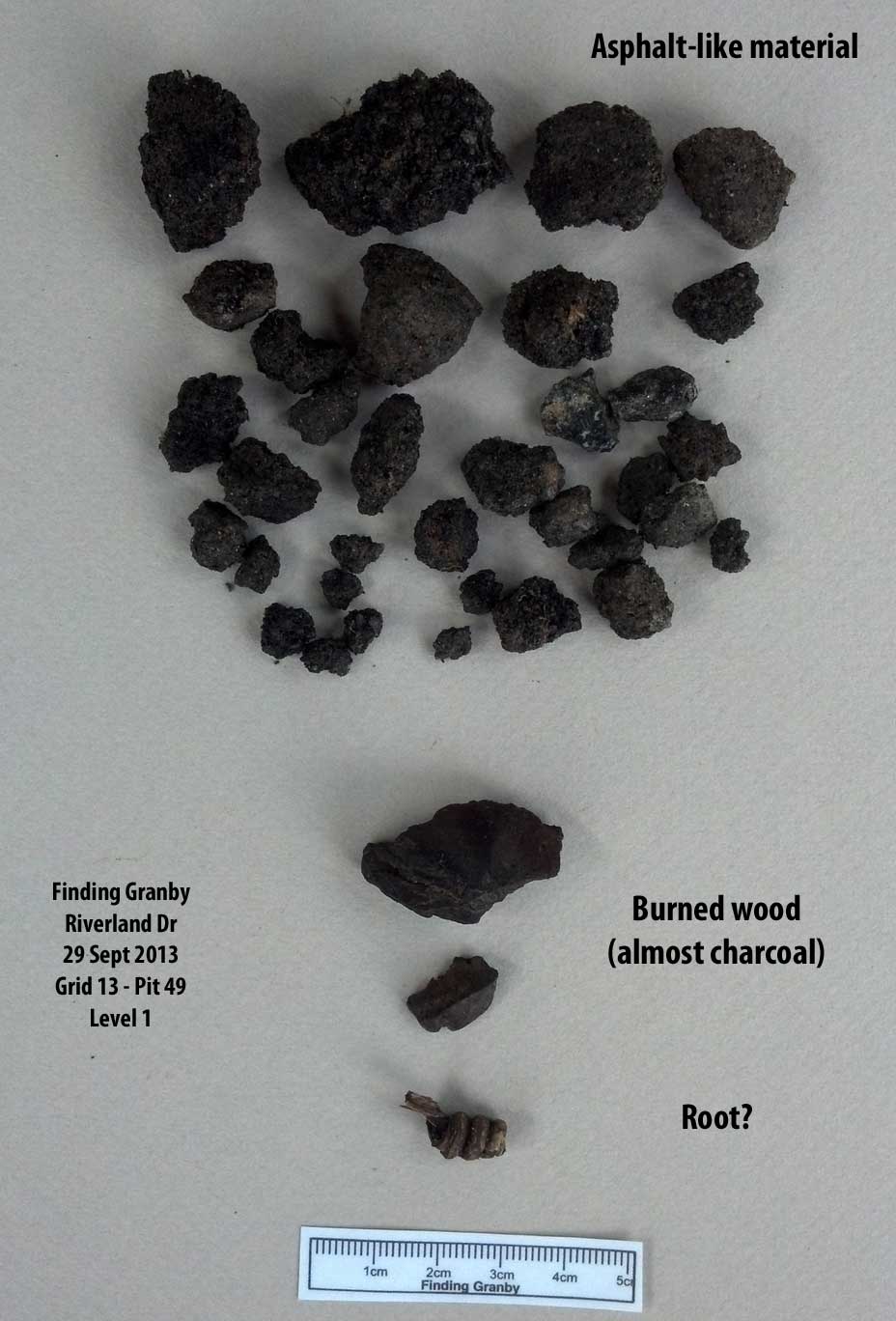Pit 49: Level 1
Completed September 29, 2013 by Debbie Bloom, Fred Morrison, DC Locke, David Brinkman, and Dean Hunt. A great day to dig. For only the second time, we opened a pit on the other side of the Riverland Drive fence. We knew this would be good and it started off with a bang when David hit a piece of metal on the first shovel cut into the grass. It turned out to be a metal hoop that held a barrel together. It was the overlapping section of the hoop which made it easy to identify. After the initial ground cut, Debbie volunteered to dig while the 4 guys did the sifting and she kept us busy. We only had 3 hours to complete and refill the hole so there was no messing around. DC found a beautiful sponged pottery piece (our first) and the counts for level 1 made this look like a really good pit.
Pit 49: Level 1 produced: 17 pieces of pottery (3 Native American), 16 pieces of glass, 7 nails, and two segments of a barrel hoop.
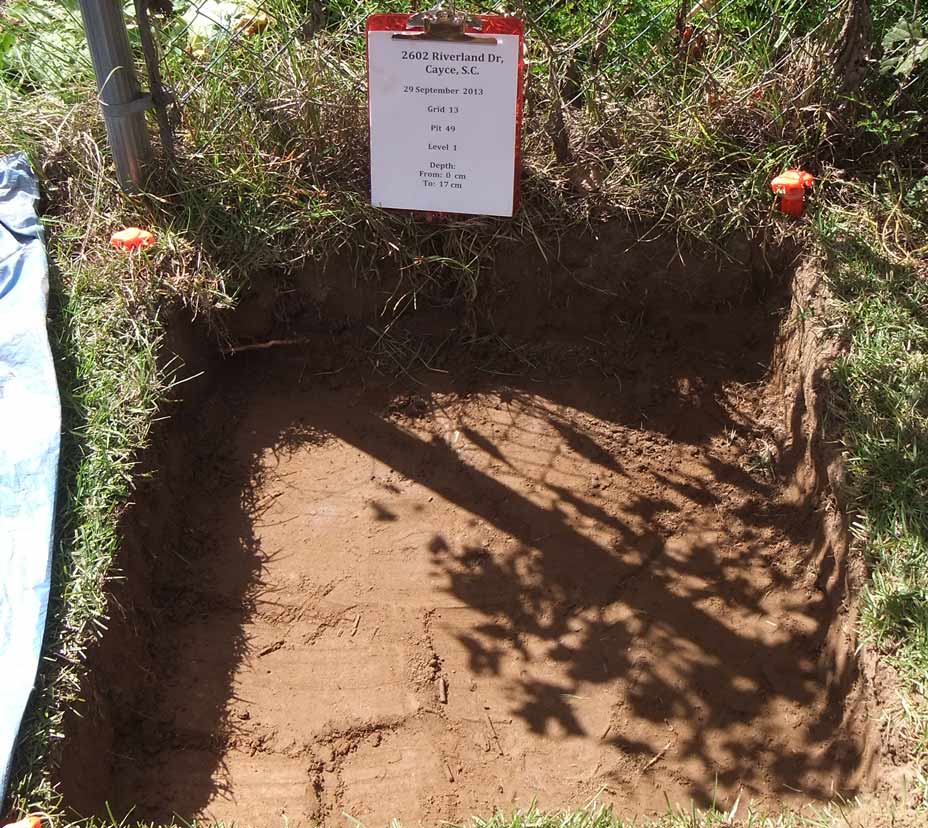
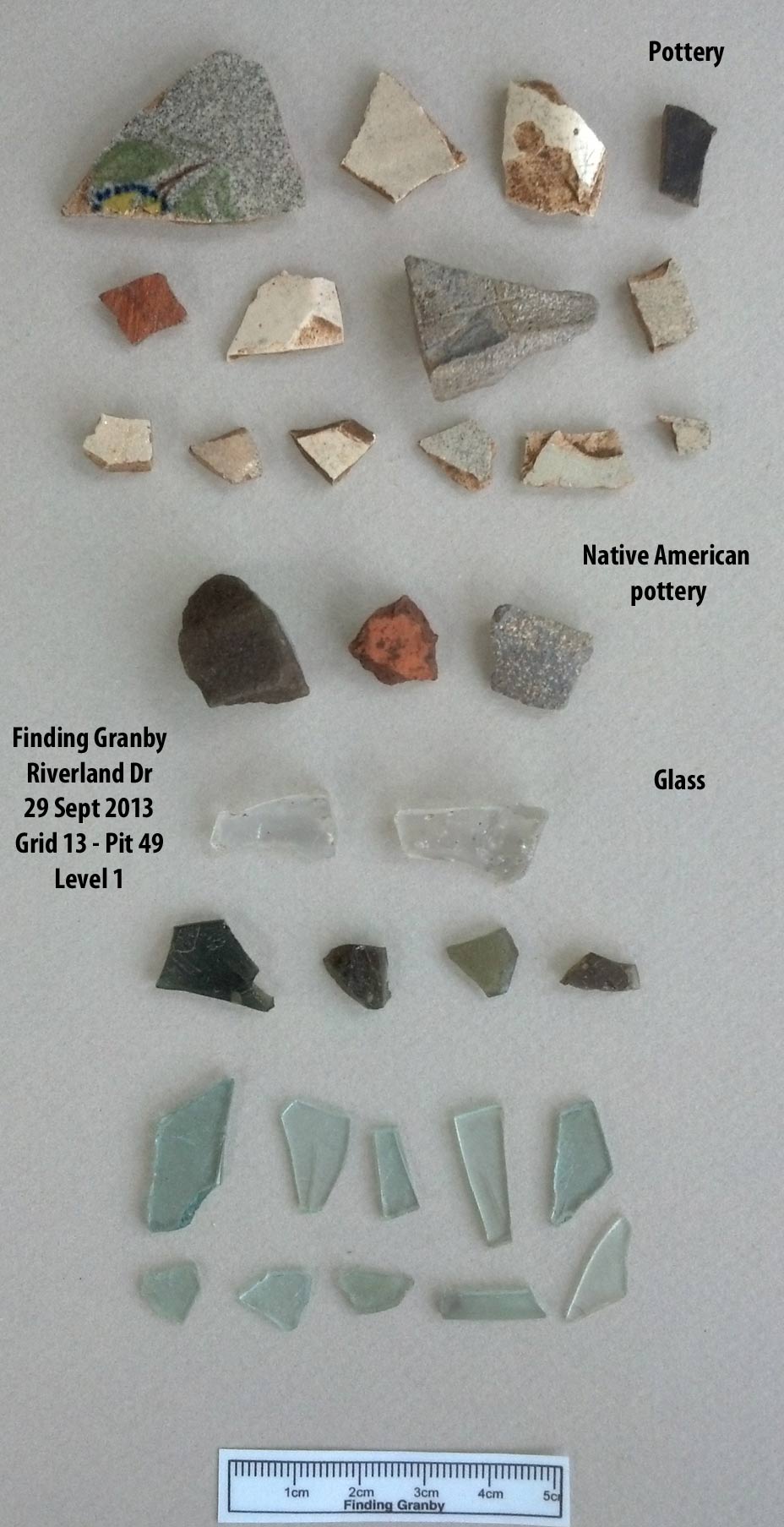
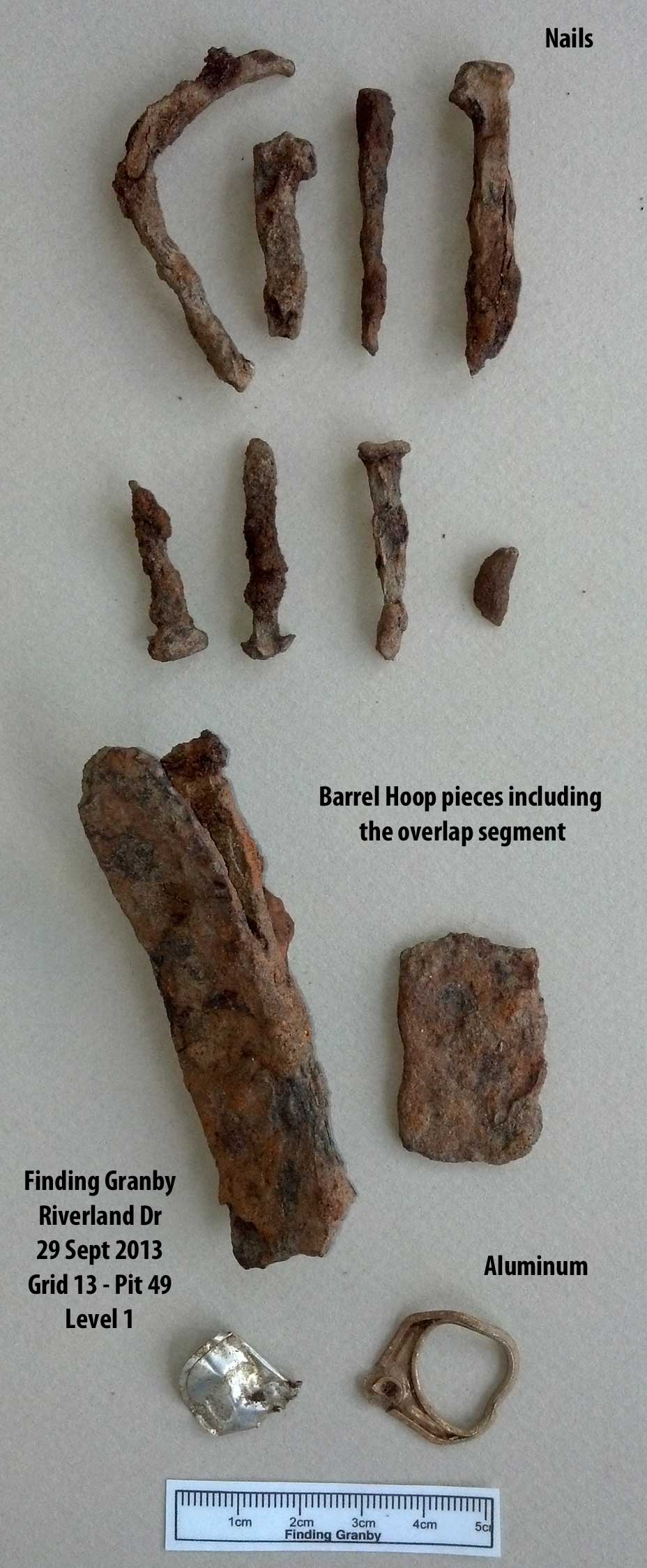
Could the iron band be a barrel hoop or even a hoop on a tobacco hogshead barrel? The tobacco inspection station at Granby stored all the tobacco in hogshead barrels. The curve in the large overlapping artifact piece, however, calculated to a diameter of only 20". Hogshead barrels had a standard diameter of 30": "A tobacco hogshead was used in British and American colonial times to transport and store tobacco. It was a very large wooden barrel. A standardized hogshead measured 48 inches (1,219 mm) long and 30 inches (762 mm) in diameter at the head (at least 550 L or 121 imp gal; 145 US gal, depending on the width in the middle). Fully packed with tobacco, it weighed about 1,000 pounds (454 kg)." The image (below) gives you an idea of the size of a hogshead barrel.
